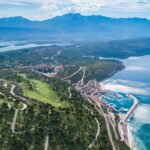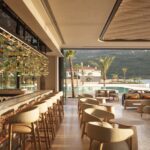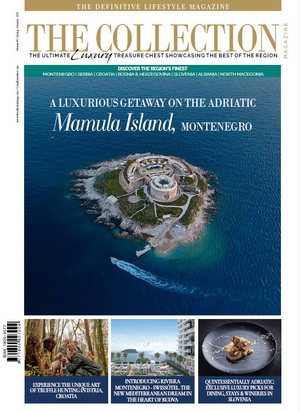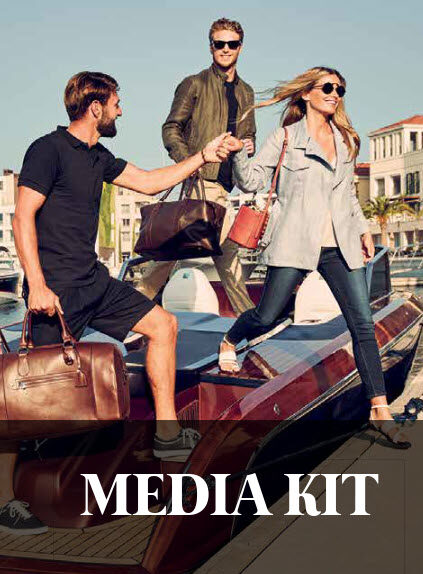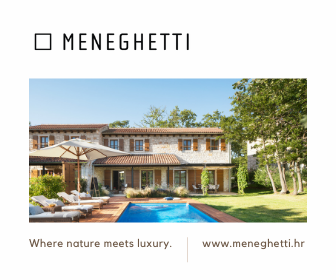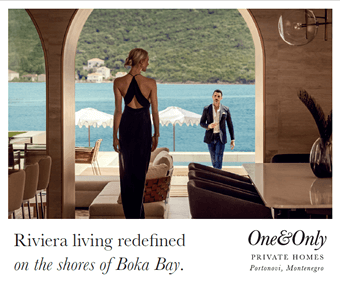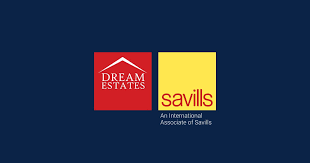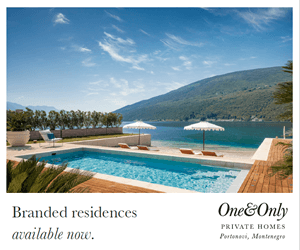Tourism in Croatia in 5 Years Time – A Look Ahead
More than any other crisis, the pandemic and then inflation with the increase in energy prices, have triggered fundamental changes in the global tourism sector, which is considering how to continue the growth in a sustainable way, with new generations setting their own travel standards. We, therefore, asked the leading analysts of Croatian tourism what the situation was like in the year that promises to return us to pre-pandemic figures, and perhaps even exceed them. We found out the condition of the Croatian hotel industry, what strategic moves should be made in order to create added value in the sector, and what the role of data monitoring is in future decisions that will be made at all levels, because the implementation of the Strategy for the Sustainable Development of Croatian Tourism until 2030 is currently underway, which has already begun with a tender for funds from the National Recovery and Resilience Plan (NPOO), and continues with the adoption of new legislation and numerous investment projects into private and public infrastructure that will follow.
GUEST WRITER FOR THE COLLECTION, MARIJA CRNJAK
BlueRock Consulting: Luxury and famous brands make the difference
Although it is a segment that still makes barely 15 percent of the total accommodation capacity in Croatian tourism, the hotel sector is an important link whose development will be given the greatest attention in the coming period, as it guarantees the lengthening of the season and the creation of added value. If we look at the business results of hotel companies in the past year, which were analyzed for The Collection by analyst Dora Montana from BlueRock Consulting Zagreb, we see that Croatian hotels of higher categories (4 and 5 stars) recorded good results regarding the basic indicators of hotel operation – the average annual TrevPAR (total hotel income per accommodation unit) was 35,000 euros, ADR 151 euros (average daily price per unit), while the average annual occupancy was 45 percent.
“The best results were recorded in southern Dalmatia and Istria, which had above-average result of all three indicators. Hotels in southern Dalmatia stood out as absolute leaders in 2022 with indicators significantly higher than the annual average. The average annual TRevPAR was 51,600 euros, i.e. 47 percent above the average, the average annual ADR was 192 euros, or 27 percent above the average, while the average annual occupancy was 50 percent, which is 11 percent more than the average in 2022,” says Montana.
Along with southern Dalmatia, Istria stands out as the leader that also recorded above-average results in 2022. The average annual TRevPAR was almost 40,000 euros, which is 14 percent more than the average, the average annual ADR was 160 euros, or 6 percent above the average, while the average annual occupancy was 49 percent, which is 8 percent more than the average in 2022. High occupancy in southern Dalmatia and Istria is at least an indication of the relatively low level of seasonality in those two regions.
Northern Dalmatia is the region where seasonality is most noticeable, with an average annual occupancy of 34 percent, which is a quarter lower than the annual average for hotels in Croatia. Montana concludes that the presence of well-known hotel brands influences higher ADR and TRevPAR in southern Dalmatia and Istria.
505 Consulting: Energy prices and personnel – the biggest challenges
Sanja Čižmar, director of the company 505 Consulting, points out that the hotel industry in Croatia is successfully recovering in the post-COVID period, although the recovery of market demand for hotels is slower compared to other types of accommodation, such as campsites and private accommodation.

Sanja Čižmar
“While the number of overnight stays in total commercial facilities in Croatia in 2022 almost reached the results from 2019, there was 11.1% fewer overnight stays in hotels than in 2019. However, spurred by great increase in bookings, as well as by increase in business costs, there was a large increase in hotel prices last year. Thus, consumer price indices in hotels and restaurants in 2022 compared to the previous year amounted to 113.4, while input costs have increased even more – the consumer price index of food and non-alcoholic beverages was 115.9. The number of fiscal receipts increased by 51.6 percent last year, and by 37.4 percent compared to 2019, which indicates a strong growth in consumption, i.e. physical turnover and prices. If this is put in the context of the growth of the inflation rate, we have a real income growth rate in the sector of 16.3 percent in the period from 2019 to 2022,” says Čižmar.
She pointed out that the trend of income growth in accommodation and catering continued strongly in the first two months of 2023, with an increase in the amount of fiscal invoices by 36.8 percent compared to the same period last year, which indicated a good market positioning of accommodation and catering activities.
However, on the other hand, we have a great increase in costs, which is a considerable challenge for preserving profitability.
“Analyzing the business results of 20 tourism companies whose shares are listed on the Zagreb Stock Exchange, it is noticeable that business revenues in 2022 compared to the previous year increased by 46 percent, the costs of raw materials and materials increased by 86 percent, labor costs by 58 percent and other costs (including energy) by 63 percent compared to the previous year. In addition to the lack of labor, the hotel industry is faced with the necessity of applying crisis management,” says Čižmar, and states that the prospects of the Croatian hotel industry in the next period depend on a number of factors.
Proximity to key markets, safety, the introduction of the euro and entry into Schengen will have a positive effect on demand growth. However, the actual volume of reservations will also depend on price competitiveness.
“For 2023, hoteliers are announcing an increase in prices of at least 10 to 15 percent due to the increase in business costs. In such a situation, the opening of distant tourist destinations and the price competitiveness of the Eastern Mediterranean will probably affect the outflow of part of the demand from hotels in Croatia to other destinations. In addition, the slowdown of the investment cycle in the hotel industry under the influence of the pandemic should also be mentioned. The largest hotel and tourism companies in Croatia, which are also the largest investors, announce an increase in investments for the next medium-term period, however, there is caution due to the limited possibility of accumulating cash flow from operations”, the consultant points out.
Horwath HTL: New products and new markets
Because of all this, strengthening competitiveness is the most important task in the future. The geographical position of Croatia and the diversity of resources are the perfect basis for diversifying the tourist offer and creating products that will attract guests in pre- and post-season, using even the most popular products of Croatian tourism – the sun and the sea. In addition to traditional inbound markets, we have a great potential to attract guests from new markets, from the Middle East to northern Europe, and even Turkey, says Siniša Topalović, a partner in Horwath HTL, whom we asked to give us examples of strategic decisions that could bring added value to the sector.
“The sun and the sea do not have to imply only swimming, just as swimming does not have to be only in the sea, because, due to the mild climate, it is very possible to swim in heated pools during the spring and autumn days. During that period, it is possible to attract guests from the northern European markets, to whom it is warm enough for outdoor activities. In other words, we can “stretch” what we already have and use it to a greater extent, and look up to few hotels that have already developed cooperation with some new markets,” says Topalović.

Siniša Topalović
The markets of the Middle East are a great example of unused potential, thanks to their holidays among other things that do not coincide with the holidays in Western Europe. An example is Ramadan Eid, followed by several days of Eid, which are regularly used for trips, so we could attract those guests to our more luxurious destinations such as Dubrovnik, or luxury resorts and hotels, of which there are more and more in Croatia, from Istria to the Split Archipelago. Cities like Dubai and Doha have a large population of “expatriates” who enjoy these holidays, and they make excellent guests. The Turkish market is huge and can be attracted by gastronomy, cultural offer, and Balkan tours… However, Topalović points out, all participants need to connect, from hotels to agencies and tourist communities, and the national airline Croatia Airlines could also be better used strategically.
“The next crucial step should be strengthening of the infrastructure for products that bring guests out of the summer season, for example, we do not yet have large congress centers, and we need at least three in the country to be able to host global conferences. It is also necessary to invest in the destinations of outdoor active tourism and to connect in that segment with neighboring countries, Montenegro, BiH or Slovenia,” says Topalović.
Health tourism is also an important link in the chain, the infrastructure of which should be strengthened by projects that applied for the tender of the National Recovery and Resilience Plan (NPOO), but it should certainly not stop there, the analyst concludes.
Ministry of Tourism: As many as 468 projects for NPOO
In the recently concluded tender for NPOO, the Ministry of Tourism and Sports received 468 project proposals from the public and private sectors, for which EUR 289.3 million in grants for tourism were secured. This is part of the Croatian Government’s tourism reform, which includes the adoption of legal and strategic documents, but also the largest investment in tourism through EU funds and the state budget, with a total value of more than 1.27 billion euros by 2030. The adoption of the National Plan for the Development of Sustainable Tourism until 2027 is expected soon, which will prescribe activities and concrete measures for the implementation of the Strategy. In addition to that, the preparation of the umbrella law for tourism, the Law on Tourism, which will establish an effective management system for the development of tourism, is in progress, it is pointed out from the Ministry.
“With the Strategy for the Development of Sustainable Tourism until 2030, we determined that the development of tourism will be directed towards year-round and sustainable tourism, for which a green and digital transition is necessary. These significant grants are intended for exactly that. The emphasis is particularly on two special forms of tourism that strongly contribute to the year-round and regionally balanced development of tourism, but also to a better quality of life and the provision of jobs for the local population. It is health and active tourism, where investments in public health and sports infrastructure are an incentive for the development of entire regions, including small and medium entrepreneurship and self-employment. We expect that these investments will result in the creation of thermal rivieras in the continental part and climate air and thermal bathing spas in Adriatic Croatia, which will make Croatian tourism more competitive and attractive throughout the year. The great interest in these confirms that the sector is ready for this step forward”, says the Minister of Tourism, Nikolina Brnjac.
In order to examine the effects of these subsidies, the Ministry engaged the Economic Institute Zagreb to calculate how only the investments in medical tourism will influence GDP and further investments. The numbers are impressive. Namely, the investment of 61.7 million euros in health tourism, available from the budget of the National Plan for Recovery and Resilience (NPOO), in the short term, could generate an additional 1.13 billion euros of investments, which represents 9.8 percent of the total investments made by the Croatian economy in 2021.
At the same time, this can create 356 million euros of new gross added value product, which represents 0.8 percent of the total achieved GDP in the Republic of Croatia in 2021. In the long term, the effects are even more dramatic – the total estimated effects on the creation of new GDP are 1.26 billion euros, which is 2.8 percent of the GDP achieved in Croatia in 2021. If we were to invest 200 million euros, which is the total potential investment in health tourism already known from the investment catalog, this would generate 4.2 billion euros of investment according to the figures from the Economic Institute. Namely, these investments are not only important for tourism, but they also have an impact on many other sectors – health, construction, trade and agriculture, influencing them to work better and more, employ people and create better life. Namely, along with transport infrastructure, investments in health infrastructure are most cost effective in the long term.
Savills Croatia (Dream Estates Croatia)
Vedrana Kelleher, owner and director at Savills Croatia (Dream Estates Croatia) says that the government of Croatia needs to establish the legal framework for the delivery of large-scale mixed-use resorts such as occurred in Montenegro which catapulted the country in 5 years to becoming a high-end tourism destination, especially in Kotor Bay. Currently, most greenfield or brownfield sites in the pipeline in Croatia are concessions – granted by the government through tender, which do not allow for freehold ownership of real estate.

Vedrana Kelleher
As we are advisors for many of the large pipeline projects, this leasehold factor, together with ongoing delays in planning issues, are both severely affecting the country’s ability to deliver high-end residences for sale and leaseback, which deliver huge economic benefits. Vedrana stated that the typical apartment unit we see now in Ciovo etc. delivers an annual contribution of EUR5,000 to the country’s GDP whereas a branded residence delivers 12 times more each year. The benefits of such projects can be witnessed first-hand at Porto Montenegro for instance. Dubrovnik is severely struggling for high-end product to match the expectations of incoming investors. Vedrana says that a prime property coming onto the market, at market price (with prime property growth averaging 10% per annum over recent years), will usually sell in a matter of weeks. Prices and demand in Dubrovnik continue to rise and seem to weather any economic headwinds traditionally. But supply continues to disappoint, says Vedrana.
Colliers Advisory: Growing interest of investors
It is therefore clear that all these processes should also increase the dynamics of investments in the coming period. The potential of Croatia as a tourist destination is already recognized by international developers and investors, and their interest is growing year by year, they tell us from Colliers office in Zagreb.
“In 2022, 40 percent of overnight stays in Croatia was in private accommodation, and the hotel market is currently dominated by 3-star and 4-star hotels, while only 11 percent of hotels are in the 5-star category. This is precisely the area whose potential was recognized by foreign operators, so Marriott will soon open a hotel in Ičići, and Hyatt in Zadar. These entries are part of a new development cycle in Croatia.

Vedrana Likan
International hotel brands are expanding into the Croatian market through new developments, and in recent years they have shown a huge interest in mixed-use products, with a focus on those with a second-home component. Investors have recognized the potential of Croatia as a tourist destination, and hotels are investing great efforts in designing additional amenities to ensure the lengthening of the season to a year-round season. The construction of hotels in many non-prime locations is becoming increasingly unprofitable for today’s investors, mostly due to the currently increased construction costs, which will potentially lead to less interest, but also to the development of less attractive locations. However, it is more likely that investors will turn to mixed-use resorts, which, in addition to tourist properties, also have second-homes, i.e. keys for tourist rentals, given that this branch of real estate brings a significantly faster return on investment,” predicts Vedrana Likan, director of the company Colliers Advisory.
Mastercard: Data analysis is key in promotion
All these processes are also taking place in a kind of tourism transition brought by new generations of travelers and new technologies, which fortunately provide us with endless possibilities in data analysis so that decisions can be made. Data insights will be the key tool here for governments, private companies and small businesses – as an incomplete overview of the full consumer journey results in inadequate insights needed to understand visitors’ needs and the information necessary to make an investment aimed at attracting them to the destination. This is the basis of the MasterCard Tourism Insights platform – it analyzes the entire consumer journey before, during, and after travel, providing a better understanding of visitors’ plans, interests and preferences, enabling them to shape their offer and direct marketing investments.
“Consumers generate massive databases before, during and after their journeys – sentiment data extracted from search engines, transactions, social network data and booking data measure the overall visitors’ satisfaction, experience, and perception concerning individual users and their competitors. Our tool helps communities relying on tourism and government agencies at local and national levels to plan their tourism recovery programs, ranging from launching international marketing campaigns to granting subsidies to citizens incentivizing local spending in the tourism sector”, says Gea Kariž, Marketing Director of MasterCard in Croatia.
It also helps hotel operators understand how to communicate with certain types of guests – distinguishing, for example, the needs of families from the needs of those traveling alone. It can also help manage off-season low demand and overcrowding during the peak season. Users of this tool include London, Paris, Madrid, New York, and the Greek national tourist offices.
Another example of data in service of making tourism more sustainable is MasterCard’s cooperation with the Croatian National Tourist Board. Tourism Insights data, based on which its users are aware of what modern travelers desire, where they stay, and where they seek inspiration, has been combined with the CNTB’s knowledge and experience to jointly implement a campaign that will entail optimization of marketing investment. Based on the data from Tourism Insights, in 2022, three markets with a strong potential for positioning Croatia as a top vacation destination were identified, and three travel-related products were chosen to be promoted there. Accordingly, tourists from the United Kingdom, Italy, and the Netherlands were approached in a specially adapted way within the framework of a one-month campaign through digital advertising, social networks, and PR. The results showed that the campaign was responsible for increasing the preference for Croatia as a destination according to all the indicators measured in the research, says Gea Kariž.
PROJECTS THAT WILL TRANSFORM THE OFFER OF DESTINATIONS
Marjan Hotel, Split
After the project had received an amendment to the building permit in January, the demolition of the old Marjan Hotel building began in mid-March, and in its place, Adris will build a new hotel, investing more than 100 million euros. The concept of the reconstruction of the Marjan Hotel will keep all the urban settings of Lovro Perković’s original project. It consists of a horizontal three-story base with two atriums around which the hotel’s public spaces line up and a vertical that keeps the functions defined by the original project. The entire reconstruction will be implemented in the dimensions of the existing building. Marjan Hotel will be a 5-star hotel with 285 accommodation units, and will have 15 floors from the basement to the vertical of the tower, where there will be exclusively accommodation units. There will be a garage with 285 parking spaces in the basement. Public spaces are arranged from the ground floor to the roof floor of the lower part of the building. The amenities that serve to activate the hotel are two atriums on the ground floor, the larger one of which is richly planted with Mediterranean plant species and will serve as a daily space to which the two restaurants and the hotel lobby are oriented.
The congress hall can be divided into three smaller ones, and it will accommodate a total of 500 people. Other public facilities include the closed part of the wellness area, which will be located on the 1st and 2nd floor and will extend to 1700 m2. Wellness will consist of an indoor pool of 140 m2, an exercise area and a spa area with saunas, relaxation areas and massage rooms.
Lukša Glavinja: Marina Cavtat&Resort
The Marina Cavtat & Resort project in Prahivac, which was declared a strategic investment project by the Government of the Republic of Croatia last July, is worth a little less than 100 million euros. At the beginning of March, the Dubrovnik-Neretva County chose the company Marina Cavtat, owned by Lukša Glavinja, as the most favorable bidder for the concession on the maritime property for the use of the port for nautical tourism where the construction of a hotel resort in the 5-star category for tourist purposes is planned.
According to the project, the resort will have 260 accommodation units or 900 beds. The construction of an inclined panoramic elevator, restaurants, catering facilities, hiking trails, outdoor swimming pools and other sports and recreational facilities is also planned. In the hotel resort, the investor intends to employ over 250 permanent and 150 seasonal workers.
In the act adopted by the Government, it is stated that the project fulfills the conditions prescribed by the Law on Strategic Investment Projects, and its co-financing from the funds and programs of the European Union is also possible. The project should be completed by 2028.
Dogus Group: Hyatt Regency Zadar Maraska
During the next year, the first hotel in Croatia that will operate under the global Hyatt brand should be opened in Zadar, the Dogus Group confirmed on Wednesday, which is currently building the Hyatt Regency Zadar Maraska hotel on the site of the former factory Maraska in the city center. The construction site was visited yesterday by representatives of Hyatt and Minister of Tourism, Nikolina Brnjac. The value of the investment in the hotel is 55 million euros, and the hotel should open its doors to guests even eight years after the Turkish Dogus announced its entry into this investment. The Zadar hotel will have 133 rooms and suites, a bar, restaurants, a spa area, and a conference hall of 400 square meters. Next to the hotel, a new two-lane road will be built to connect Trpimir coast with Miroslava Krleže Street, and two residential zones with 208 apartments are also planned.
The total area of the entire project is 23,500 square meters. The plan is for the hotel to be in operation until the season of 2024, but Burak Baykan, regional director of the Dogus Group, said at the end of 2022 that it was an ambitious plan, but the hotel should be in operation at least until the end of the year lengthening of the season for the whole year.
The planned investment so far was EUR 100 million, however, with changes in the market and the increase in the price of construction materials, the current investment is estimated at 120 million euros, of which 55 million euros is related exclusively to the hotel.

